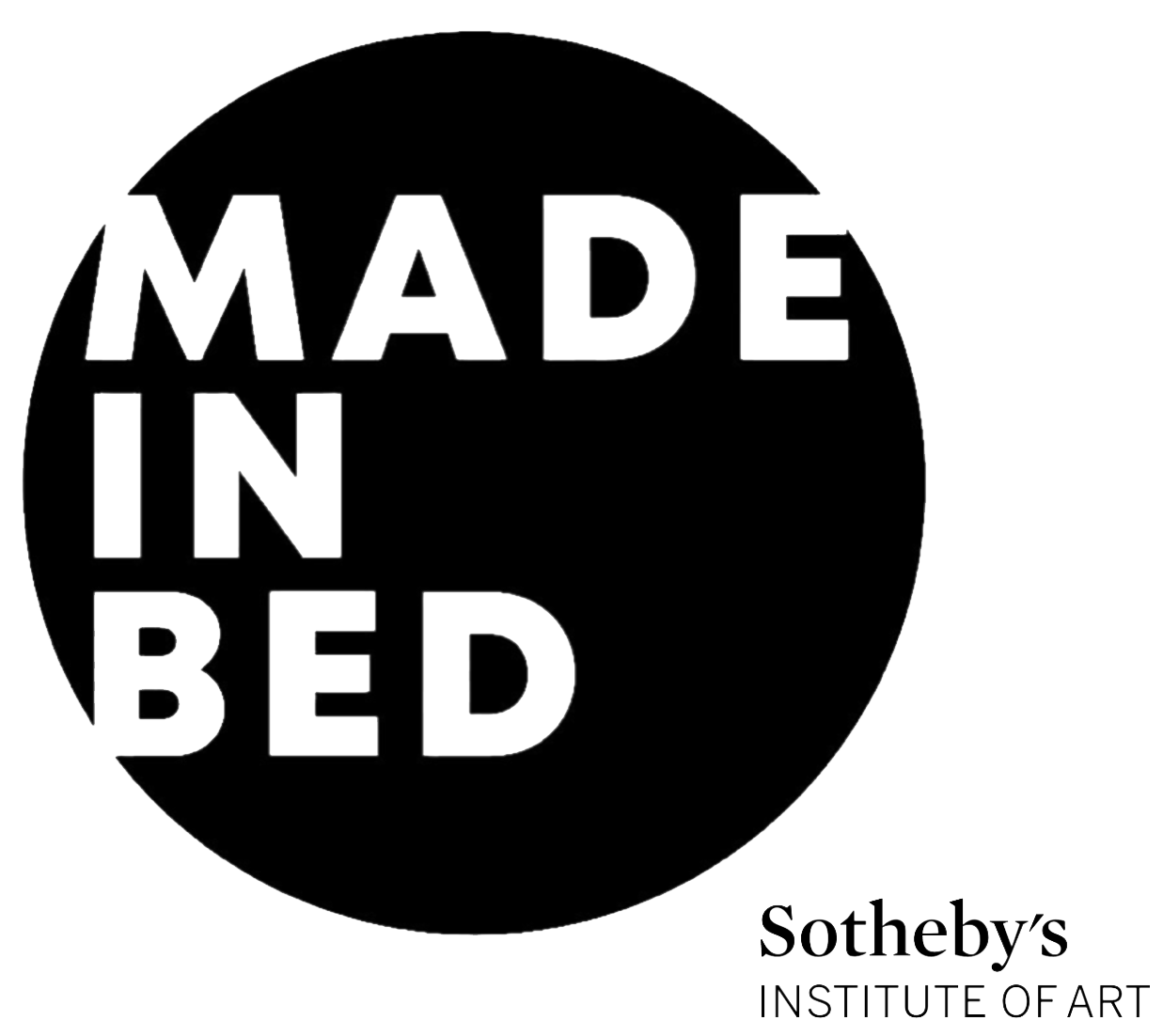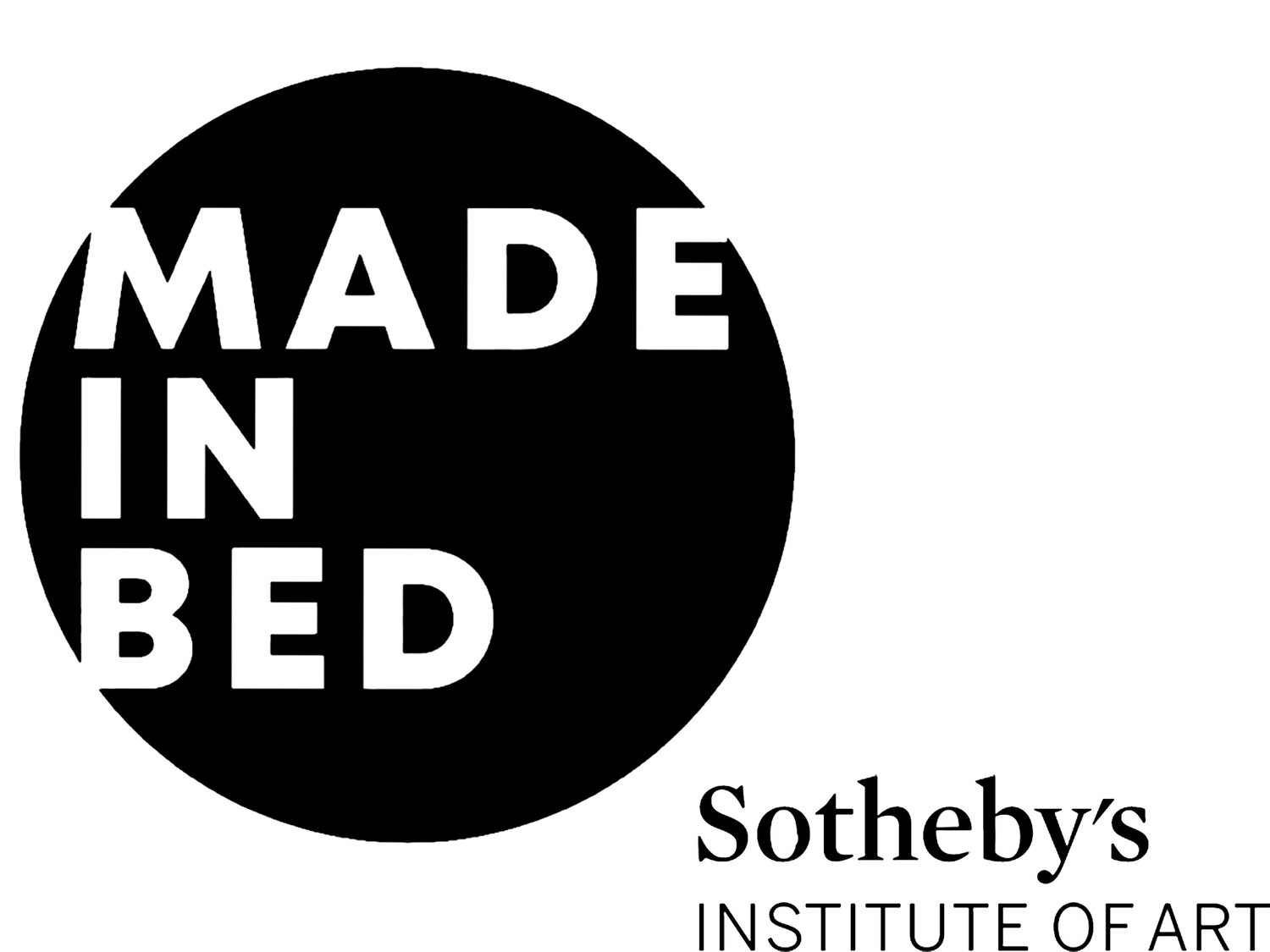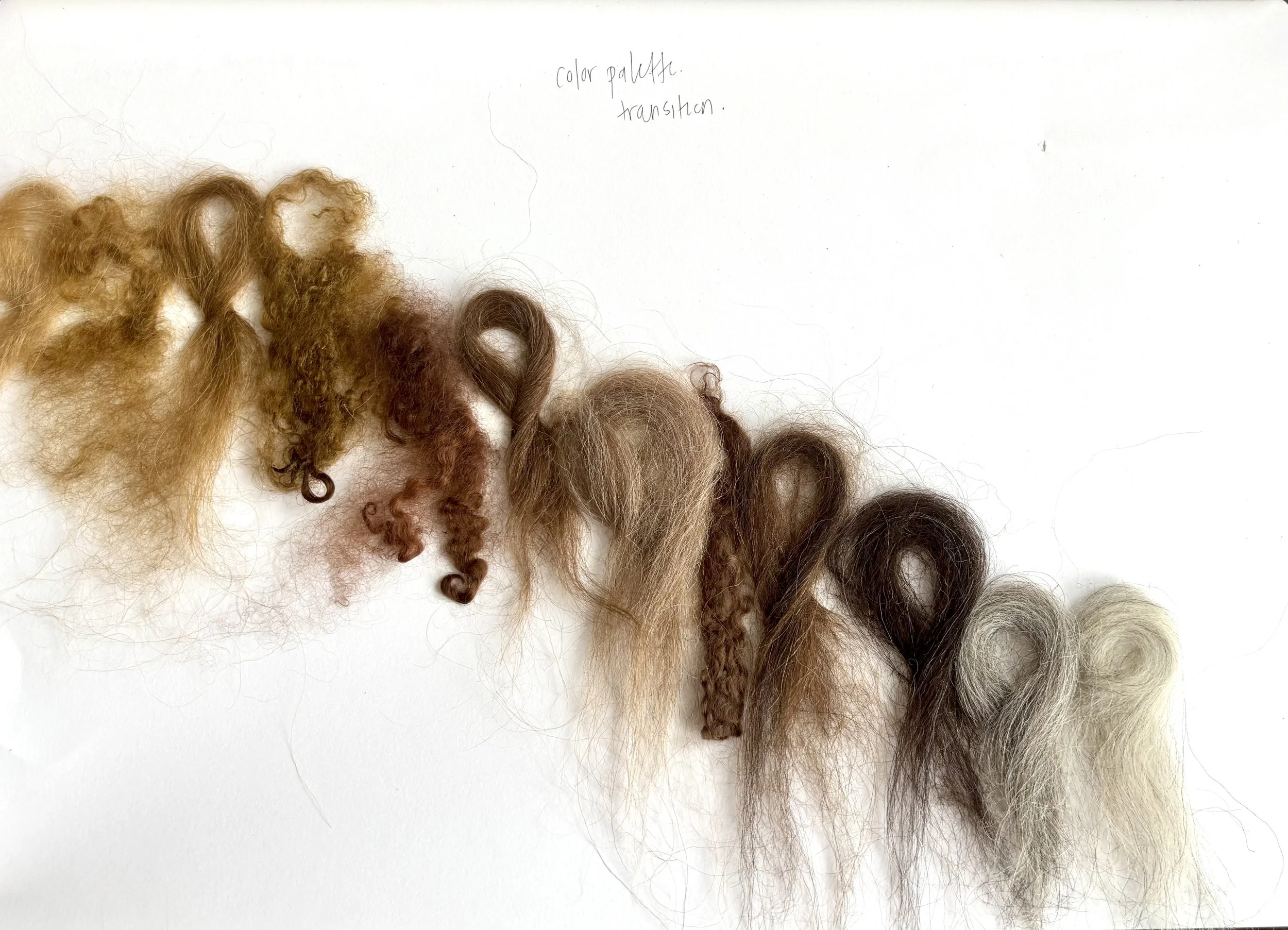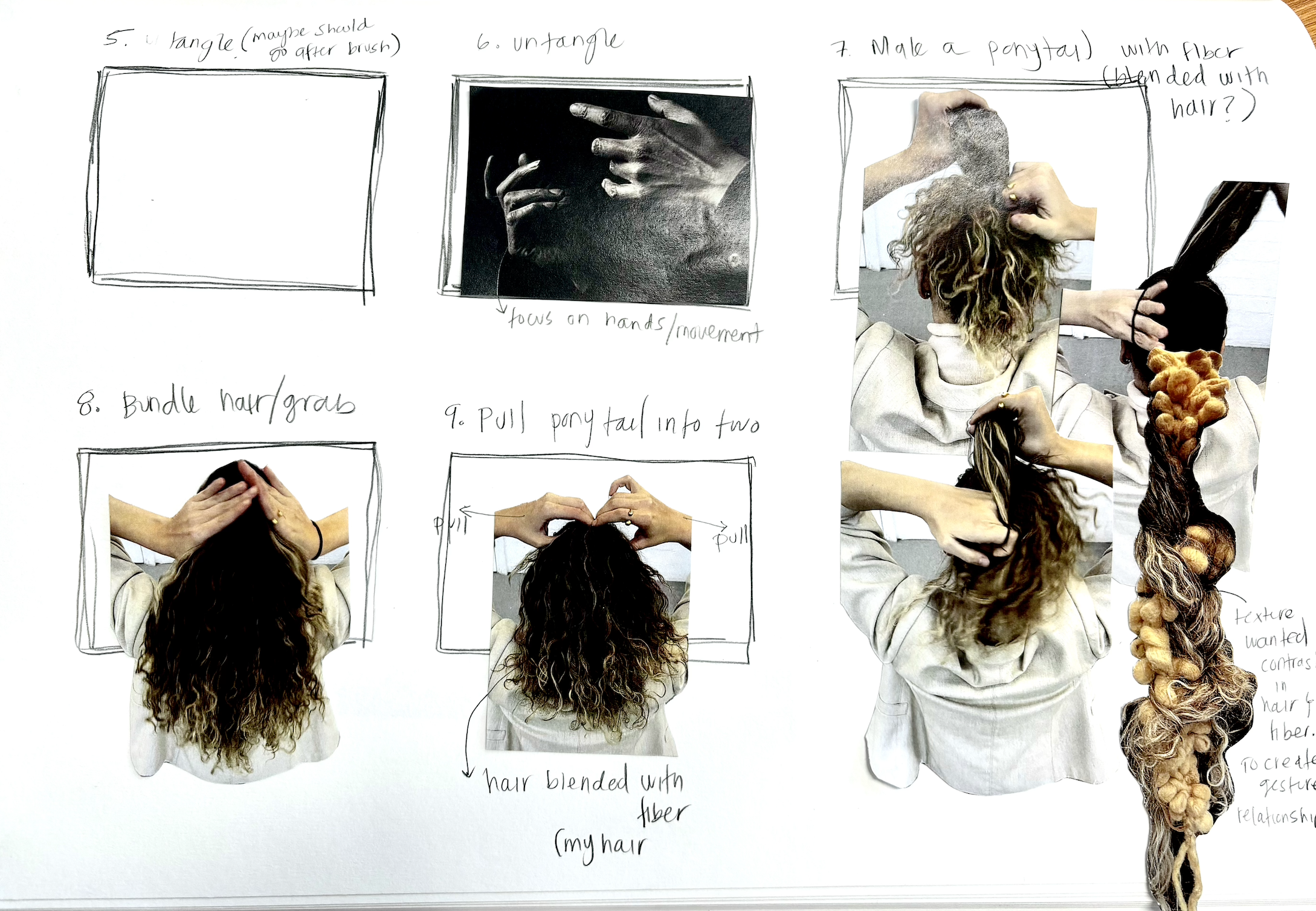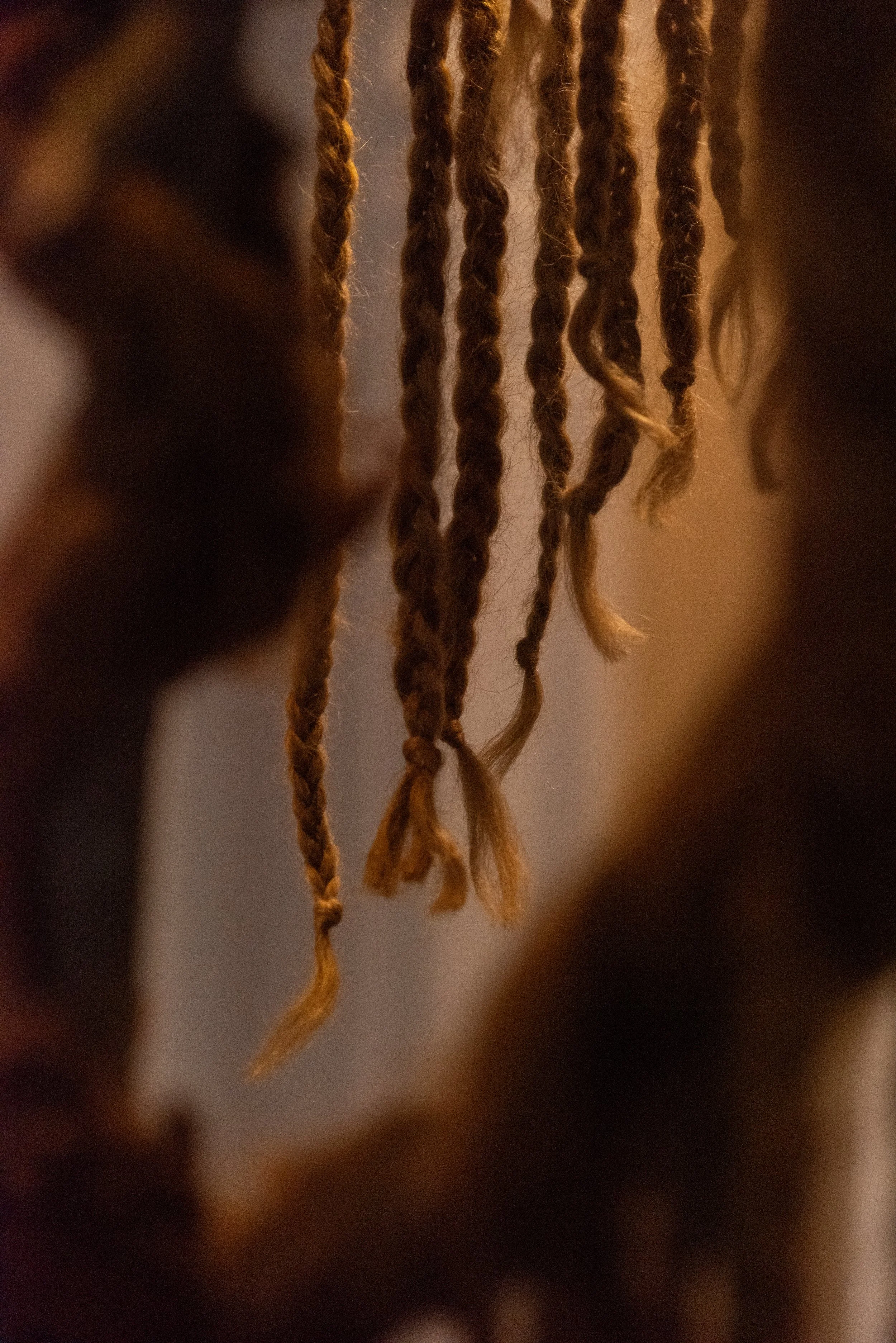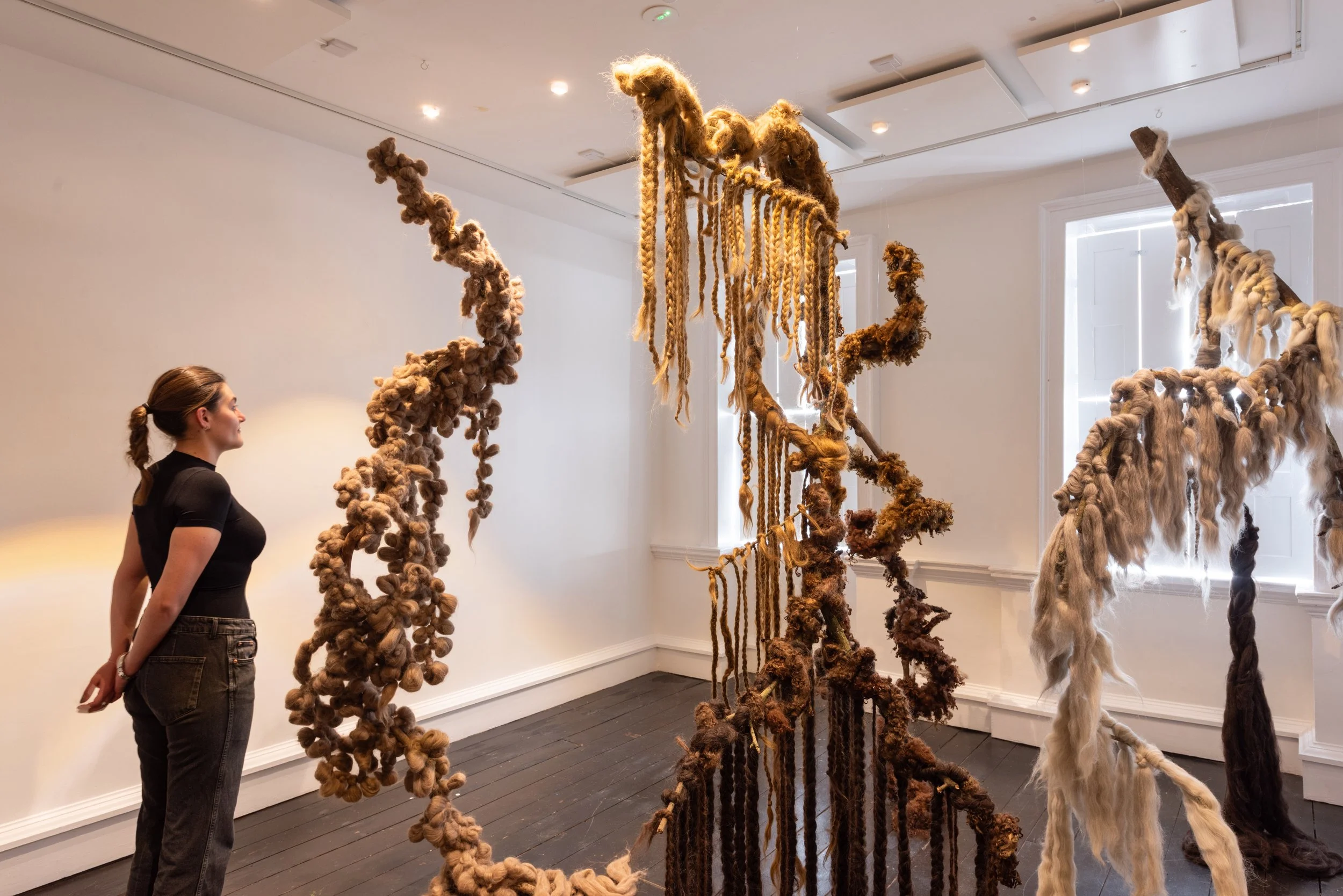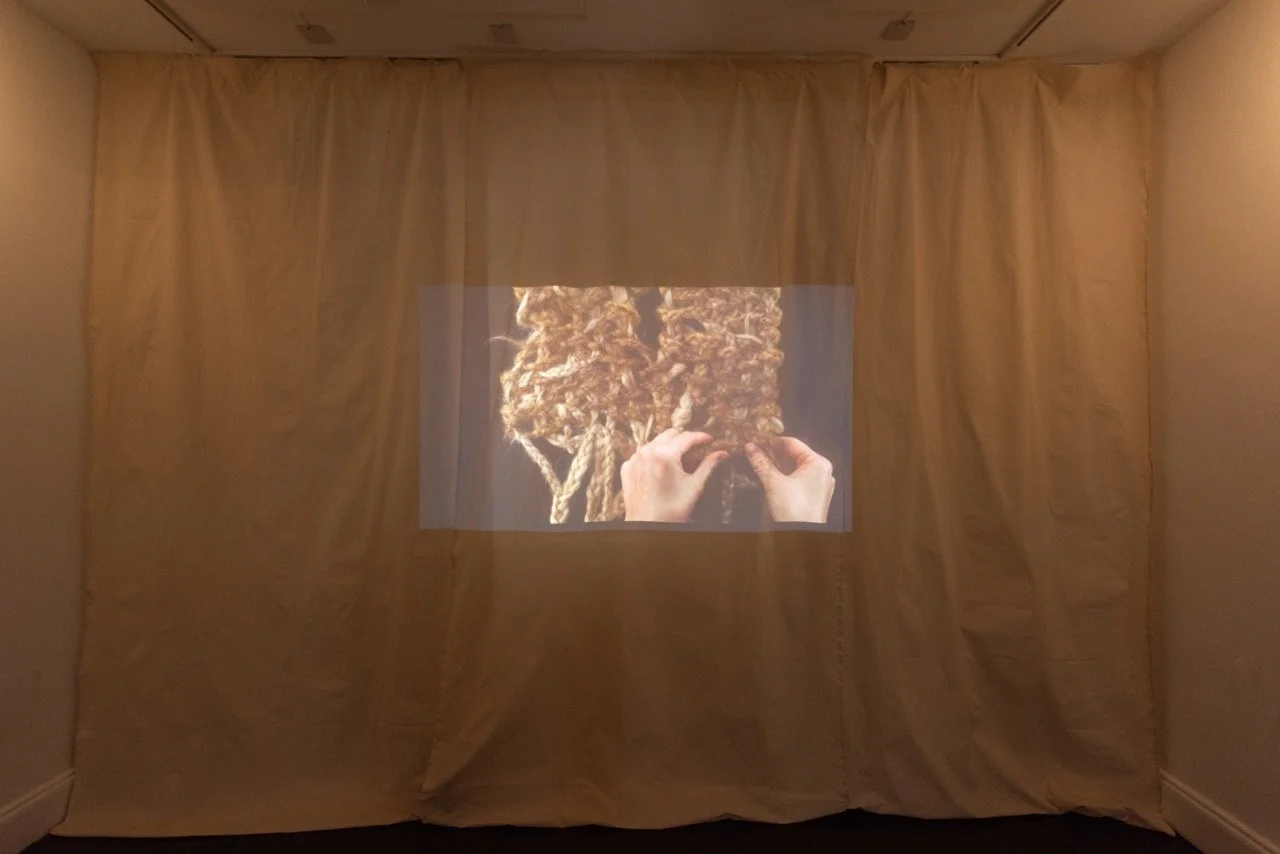Camila Barvo
Camila Barvo is a Colombian textile artist and designer based in London. Her practice encompasses soft sculpture, embroidery, video, natural dyeing, and fiber/fabric manipulation—languages she uses to explore themes closely connected to femininity and identity. Her Latin American cultural heritage permeates her work, where materials speak as eloquently as form. Fique, jute, and coffee frequently appear in her pieces—not merely as raw materials, but as living symbols of Colombia’s rich textile legacy, celebrating and recontextualizing her material tradition.
Camila Barvo. Photo Courtesy: the artist.
“I was born and raised in Medellín. Looking back at my childhood—especially given the Colombian context—I realize I had a safe upbringing, although I always felt like I lived inside a bubble, like a glass sphere. There was something in me that never fully broke free, a part that observed more than it acted. One of the clearest memories I have while growing up is my relationship with my grandfather. He was endlessly curious. He collected seeds and kept them in jars, sorted like tiny treasures. I’d spend hours playing with those seeds, looking at them one by one. I remember thinking: each of these seeds will become a different tree, each with its own shape, rhythm, and personality. I believe that was the moment I discovered a deep curiosity for natural objects, for the organic and transformable.”
Still, growing up in Colombia meant seeing art as something distant, almost unattainable. It was not traditionally considered a viable career or a sustainable profession. For this reason, Camila moved to Bogotá to study design at Universidad de los Andes. “It was there that I began to cultivate my creative side, but within the context of design. I never saw art as a real path until I completed my thesis project: an embroidered piece I originally conceived as a surface design—something applicable to a garment or a commercial object. Over time, when I looked at it again, I realized it wasn’t a simple surface: it was a work of art in its own right.”
DES-HILADO. Photo Courtesy: the artist.
It was this insight that motivated her to pursue a Master’s degree focused on textiles. Among the many options available, she chose London because it offered a rich and diverse textile landscape, both technically and conceptually. Specifically, she enrolled at the Royal College of Art (RCA). Since then, her research and practice have earned notable acclaim, including participation in the RCA Sustain Lab annual exhibition (2024), the Highly Commended award from the UK Textile Society for postgraduate work, and a show at Blackdot Gallery during the London Design Festival.
London fundamentally shifted how she saw her own work: “Many of the pieces I made in Colombia ended up rolled up and hidden in a closet for years, as if I didn’t know what to do with them. I kept asking myself, ‘What is this for?’ ‘Where does it belong?’ It wasn’t until I moved to the UK that I realized: these works do have a place. There are spaces and communities that value this kind of practice. That external recognition helped me legitimize my voice as an artist and understand the value of something born out of intimacy and craft—but still able to hold space within the art world.”
That curiosity for volume and space has been with Camila since she was young. She recalls that her ‘first artwork’ wasn’t made with a pencil, but with a scalpel. As a child, she loved collage—cutting into magazines she found at home, reworking the original images until they became something entirely new. Today, she continues to explore manual gestures and materiality, defining her work as abstract—but rooted in texture. “I feel like my work belongs in the realm of fiber art, because I make the fiber speak. To me, fiber has so much to say… I feel that textile art is truly on the rise right now. People are beginning to recognize it as a distinct category within the broader art world. The thing is, textiles have long been viewed as decorative elements or domestic objects because they often carry the association of a woman knitting at home or a grandmother embroidering. But I feel this is changing—those boundaries are starting to blur. Here in the UK, textile art is already firmly established as a category. Moreover, this country has a rich textile tradition, so textile art isn’t just its own category—it has branched out into countless subcategories. Because of that, I’ve been able to understand where my work fits and where it doesn’t within this landscape. When I look at Colombia, for example, there’s incredible richness in artisanal textiles and fibers, yet the work hasn’t received as much recognition. So part of the challenge is to move it beyond that artisanal realm—which, of course, is the foundation of everything—and beyond the naive or purely decorative perception.”
Camila Barvo, Sketchbook. Photo Courtesy: the artist.
Camila’s most recent exhibition took place at the Sarabande Foundation—a space created by the late designer Lee Alexander McQueen to support a new generation of fearless creatives. The Filaments of a Memory was her first solo show. With this exhibition, Camila wanted to explore femininity as a spectrum. “For me, femininity is something expressed through hair. Ten years ago, being feminine meant having perfectly styled hair. Now, I can feel feminine even when my hair is messy. It might sound trivial, but for me, femininity used to be tied to the idea of perfection—being well put together. This way of understanding it is deeply rooted in my own context. In Colombia, femininity is often framed through the male gaze, which is why it’s closely linked to appearance. A young lady is always expected to be well-presented, and women are expected to be groomed and put-together when they go out. Over the years, I’ve learned not to feel guilty about that—about being ‘messy.’ Now, femininity also exists in spontaneity… For people who grew up outside Colombia, this might sound absurd, trivial, or even backward. However, I’ve managed to blur that rigid idea of what it means to be a woman.”
Camila Barvo, The Filaments of a Memory, 2025. Photo Courtesy: the artist.
Camila explains that this was a process, accompanied by many years of deep conflict with her hair. “I have curly hair, and curly hair is not particularly easy to tame or style. So being curly and ‘put together’ weren’t always ideas that seemed to go hand in hand. Accepting my curls wasn’t always an easy process. I got a keratin treatment, and for five years my hair was completely straight. I felt like that really affected my personality. When I was curly, I felt outside the norm, and as a kid, I wanted to belong to those social beauty categories that told me straight hair was better—that it was prettier. For example, in my school, there were only two girls with curly hair and I remember people—not in a mean way—making it clear I was one of the ‘curly ones’—the other, the different one. Also, at home, I remember feeling like it was hard to live with my hair... My parents separated, so on the days I spent with my dad—like many dads—he didn’t really know how to handle a girl’s hair, especially curly hair. I remember him going to hair salons asking how to make a braid. That moment stayed with me because I thought about how this man was dedicating himself to making a braid for me. That moment felt like a union between the masculine and the feminine. Of course, I know these are huge concepts with many spectrums, but it felt symbolic to me.”
Camila Barvo, Sketchbook, 2025. Photo Courtesy: the artist.
For her solo show, Camila wanted to bring all these deeply personal experiences into a larger scale. The result was an exhibition that revolved around the theme of hair—rooted in her own experience but also anchored in the Latin American context. “There are so many social layers in Latin America, I feel like hair is something that, in a way, connects us all.”
Camila is aware that traditionally, the conversation around hair has emerged primarily from Afro communities. In fact, part of her creative process involved participating in talks where Afro women discussed their hair. “After being part of those spaces, I was afraid that people might look at my work and think, ‘This young woman hasn’t really lived through anything… So, I try to be very careful about that. These are stories that are really important to tell. But I also recognize that I come from a very different place. I’m not Afro—I just have curly hair—so it’s obviously different. If you think about the women from San Basilio de Palenque—the Afro community in Colombia that still honors the braided hairstyles slaves used to escape—that fascinates me to research, but I have a lot of respect for it. And I’m also aware that is not where I come from. What I wanted to do with my work was add another layer to the conversation, maybe just bring in my perspective. I wanted to reflect about the memory of the body that’s there, the physical, performative act of hair manipulation that we so often take for granted. Also, I hadn’t really reflected on this until I looked at Colombia from a distance and realized that the colonization process created so many social layers. For me, hair is a political gesture that reveals a lot about our history. That’s what makes it so interesting because it’s an idea you can trace back to colonization. When the colonizers arrived, we adopted external beauty standards, and many social layers mixed, giving rise to many new identities and hair textures, etc.”
Through the transformation of hair manipulation into textile fibers, each soft sculpture took on a fluid, undulating form, almost as if defying gravity. The installation celebrated the untamed beauty of curly hair, while conveying themes of unfurling, fraying, and growth as subtle yet powerful forces. Visitors were invited to reflect on their own relationship with hair—how it shapes their identity and self-image—and to consider the unique story embedded in each strand, from genetic heritage to emotional resonance.
Braids, in particular, emerge as one of the key symbols woven throughout Camila’s exhibition, representing a deeper connection to history, identity, and the complex narratives that hair carries. “It is a symbol because I feel like everyone has a relationship with braids. But at the same time, it's a textile gesture, it's a weaving, so I feel like it conveys really well what I want to say. And I wanted to show that hair is also, at the end of the day, a material. Just like there are wool fibers, there are hair filaments. Although in my work, I make everything with wool—there's no human hair. What was important to me was to show the meaning of the gesture. Making a braid is an everyday thing. I’m interested in those small gestures that are part of the manipulation of a material, and transforming them into something else, giving them a perspective. That relationship with the mundane, something that often goes unnoticed, but then putting a magnifying glass on it—I think that’s important in my work. I also like to talk about the individual in the collective. I have stories that marked me with my hair, and you do too. It's something that starts with the person but becomes collective.”
Camila Barvo, The Filaments of a Memory, 2025. Photo Courtesy: the artist.
In her work, Camila draws a connection between hair manipulation and the natural world, especially through the use of trunks. For her, the trunk represents a raw, organic growth process similar to that of hair. Just as hair grows following its genetic blueprint, trunks grow according to the information encoded in their own DNA. This natural growth is unforced, following its unique, predetermined path. Camila emphasizes that nothing in nature, whether it's a tree or hair, is ever perfectly straight. Everything has its curve, its frizz. This organic, unpredictable growth becomes a central theme in her installation, where the trunks, much like hair, are allowed to follow their natural course. “I braid over what nature has already made. Curls challenge reality, and I wanted to create the impression that the wool itself was carrying the weight—this sort of balance between dream and reality.”
Camila Barvo, The Filaments of a Memory, 2025. Photo Courtesy: the artist.
The essence of the exhibition also came through in the sensory experience. Camila wanted the installation to feel like a place that invited closeness, a space where art was not just observed but experienced through all the senses. "I mixed two scents; one was smoky, reminding me of an old room, like the smell of a grandmother’s closet. The other was earthy, like freshly cut stems from the forest. I wanted the space to feel like a chest holding memories—where one could step into another place, where the senses would merge and bring the viewer closer to the piece. The textures, the light, and even the smells were an invitation to break the distance often created by art on pedestals, to encourage the viewer to touch and engage with the work in a more intimate way. My art is not meant to be viewed from afar; it’s meant to invite curiosity and closeness. When we walk in a forest, we don’t just look from a distance—we want to get closer, to explore."
Camila Barvo, The Filaments of a Memory, 2025. Photo Courtesy: the artist.
In the short term, Camila has a new show coming up in Sarabane, where she plans to explore how nature weaves structures, drawing inspiration from nests and other natural formations. "I’m interested in incorporating more of the human body into my work, allowing people to interact more deeply with the art. I also want to explore the idea of mapping—mapping emotions, something intangible—through textile-based cartographies, creating landscapes that aren’t just physical but emotional."
For Camila, the future is one of growth, experimentation, and deeper immersion into both the material and metaphorical. Her next projects will expand both the physicality and conceptual depth of her works, perhaps incorporating even more organic forms and personal narratives into her art. “I want to be in a place where my art can be experienced, where people can touch it, feel it, and, above all, be immersed in it,” she reflects. “Art should invite you in, not keep you at a distance. And that’s what I hope to do with my future shows.”
Find out more about Camila’s work on Instagram
Camila Barvo, The Filaments of a Memory, 2025. Photo Courtesy: the artist.
Mariana Duque Mordecai
Social Media Manager, MADE IN BED
